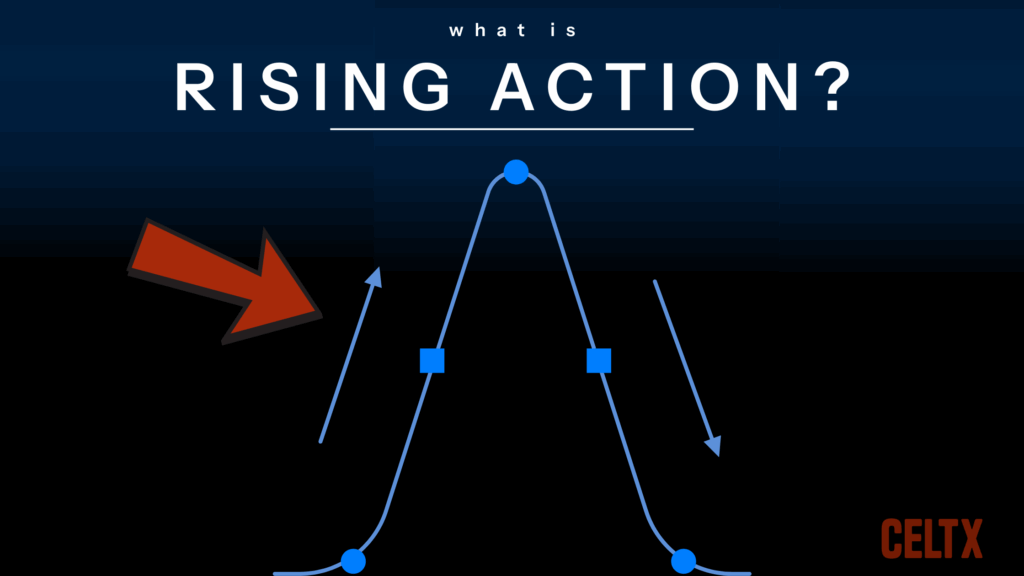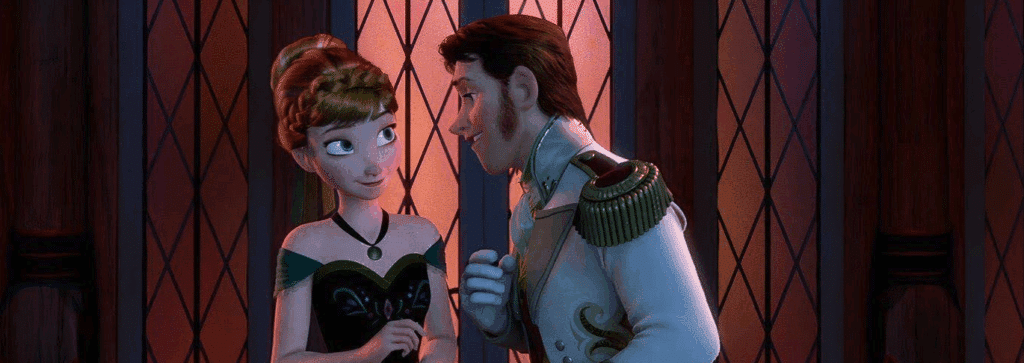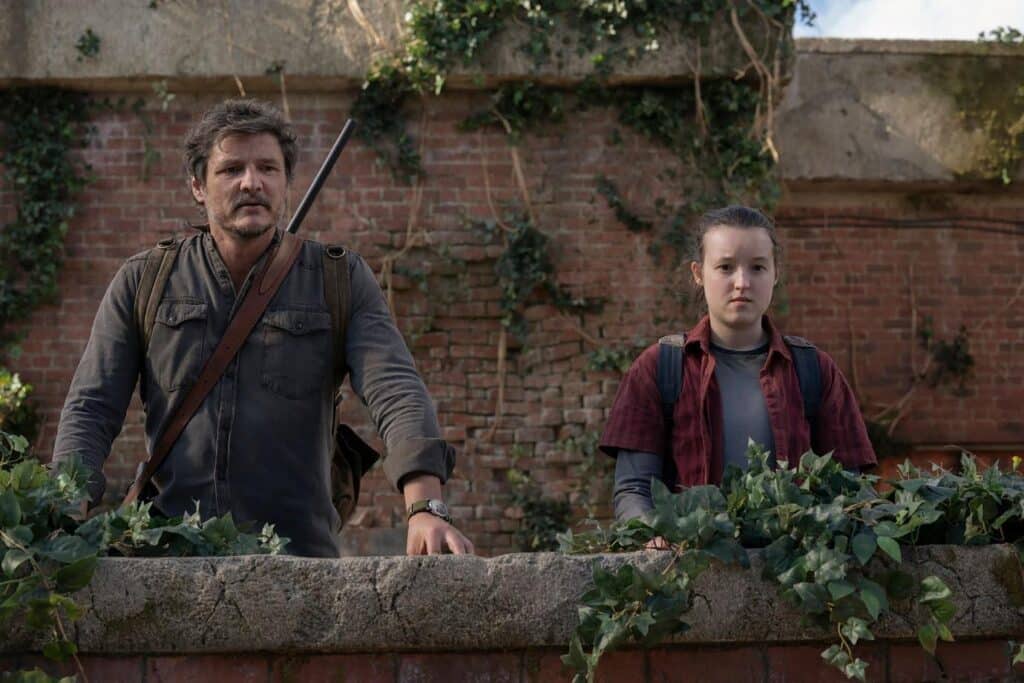
Oh, hello again! You’ve probably come from our recent exposition blog. The next natural step in your storytelling journey will be rising action. It’s essential to building a story that keeps readers glued to the page. It’s the heartbeat of narrative tension, the part of the story where characters are tested, stakes are raised, and conflicts deepen. And it all ends with an explosive narrative climax.
In this post, we’ll explore what rising action is and why its critical to storytelling. We’ll also run through the key elements that make it effective, and how you can adopt them in your own work. And to give you that extra dose of inspiration we’ll even look at some iconic examples of rising action from film and TV.
Let’s get started.

Table of Contents
- What is Rising Action?
- Why it’s Essential for Tension
- Key Ingredients of Rising Action
- Examples of Rising Action in Movies/TV
- Writing Tips to Keep Rising Action Dynamic
- FAQ
- Conclusion
What is Rising Action?
In storytelling, rising action is the series of events that occur after the inciting incident and lead up to the climax of the narrative.
The rising action is where the story builds tension, introduces obstacles, and develops character motivations. Think of it as the journey up the roller coaster: your heart rate spikes as you anticipate the drop. It’s not just about action, but about escalating conflict and building momentum.
If you’re working with a traditional three-act structure, you’ll find rising action takes up most of Act 2, connecting the story’s beginning to its peak. It carries the emotional and narrative weight of the entire plot.
It’s all well and good talking about the three-act structure but where exactly does rising action fall within it?
- Exposition (introduces characters and setting)
- Inciting Incident (disrupts the status quo)
- Rising Action (tension and complications build) ← You are here!
- Climax (turning point and the highest tension)
- Falling Action (immediate fallout)
- Resolution (wrap-up and closure)
Rising action isn’t an optional part of the structure as it’s where most of the excitement lives in the story. Without it, the story falls completely flat.

Struggling with structuring your story? Never fear, as Celtx’s beat sheet is here to help you organize your ideas into a clear outline!
Why it’s Essential for Tension
Tension is the engine that drives a story forward, keeping our audiences asking, “What happens next?”. The tension is constructed layer by layer during the rising action. But why does it actually matter?
1. Creates Emotional Investment
As the stakes rise and the protagonist faces challenges, the audience becomes emotionally invested in the story. They worry about the character, root for them to succeed, and fear their failure. They can’t do that if there’s no rising action.
2. Drives the Plot Forward
A story stalls without rising action. The purpose of this phase is to complicate the protagonist’s journey. Each new challenge the protagonist faces makes the climax feel earned.
3. Deepens Character
Rising action allows the audience to see how characters respond to pressure, make decisions, and evolve. These moments define who they are and what they’re willing to fight for.
4. Builds Anticipation for the Climax
Tension without release is unsatisfying. That’s where rising action comes in; it carefully paces the tension so that when the story climax hits, it feels natural and as impactful a payoff as possible.

Craft tension that pulls your audience in.
Use Celtx to build out your story arc from the first beat to the final twist.
Sign up free.
Key Ingredients of Rising Action
Crafting compelling rising action isn’t just about throwing in random challenges for your protagonist to overcome. It requires deliberate structure and key storytelling components such as:
Conflict
Conflict is at the core of every story, intensifying during rising action. It can either be:
- External (via an antagonist, natural disasters, systems)
- Internal (via self-doubt, trauma, fear)
The most memorable stories often layer conflict with external events often triggering internal struggles.
To explore the intricacies of internal and external conflict further, click here.
Stakes
Stakes should grow over time, focusing on what the character stands to lose and what else is risk in the wider world of the story.
If the stakes are too low, the audience could become disengaged. If the stakes are raised, slowly evolving and personal to the protagonist, your audience are more likely to become invested in the story.
Take The Hunger Games; once in the games themselves, Katniss’s initial stake is survival, but it grows to include protecting Peeta, defying the Capitol, and sparking revolution.
Setbacks
Rising action that favours the protagonist and only allows them to succeed becomes *yawn* boring. They must face losses, failures, and hard choices. These setbacks force growth, add tension and make the final victory (or defeat!) more meaningful.
Think of setbacks as tests for your characters. Each one tightens the noose or raises the pressure, keeping readers engaged.
Examples of Rising Action in Movies/TV
Now it’s time for some inspiration. Here’s our top picks of the best examples of rising action in some of the most well-known stories.
Harry Potter and the Prisoner of Azkaban (2004)
Inciting Incident
Harry learns that Sirius Black, a dangerous escaped prisoner, is apparently hunting him.
Rising Action
Dementors arrive at Hogwarts. Harry faints in their presence and subsequently learns more about his parents’ death. Tension builds as he discovers Sirius was supposedly responsible for betraying them. Harry sneaks into Hogsmeade, overhears conversations, and grows increasingly obsessed with revenge.
Setbacks/Obstacles
The Dementors affect him physically and emotionally. He struggles with learning the Patronus Charm. The Marauder’s Map reveals troubling truths, and distrust grows between friends and teachers. Buckbeak’s upcoming execution and Hermione’s time-turner complications add pressure to the plot.
All these events drive the story towards the climax: the truth about Sirius, the confrontation in the Shrieking Shack, and Harry’s ultimate choice to save rather than kill his godfather.
Stranger Things | Season 1 (2016)
Inciting Incident
Will Byers disappears.
Rising Action
Joyce sees strange lights, Eleven is found, the boys investigate, and the secrets of Hawkins Lab unfold.
Setbacks
The group is threatened, mistrust grows, Eleven is captured and people die.
The rising action in season one of Stranger Things escalates fear and suspense, leading to the eventual climax in the Upside Down.
The Dark Knight (2008)
Inciting Incident
Batman begins cracking down on mob crime.
Rising Action
The Joker emerges and begins creating utter chaos. He kills innocent civilians and destroys trust.
Setbacks
Rachel dies and Harvey Dent becomes Two-Face. Gotham’s hope collapses.
Writing Tips to Keep Rising Action Dynamic
Now, actually writing effective rising action requires more than adding drama. It’s about building tension through pacing, cause-and-effect, and character development.
Check out our top tips for writing the best possible rising action below:
1. Have a Clear Goal
Your protagonist needs a concrete goal to drive the story forward. Every obstacle in the rising action should relate to or complicate this goal.
Take Finding Nemo: Marlin’s goal is to find his son. Every challenge, from sharks, jellyfish and strong ocean currents, stands in the way of that.

2. Gradually Raise the Stakes
Don’t start with the world-ending threat. Instead, start small and then escalate. Each scene should raise the emotional or physical stakes for your characters.
Let’s return to The Hunger Games for a moment where author Suzanne Collins gradually raises the stakes for Katniss. She first volunteers to take her sister’s place as tribute for District 12: at this point, the stakes are hugely personal to her.
Next, she’s forced to survive in the arena against trained killers. Later, her alliance with Peeta creates moral stakes. By the climax, her defiance against the Capitol is now about rebellion, not just survival.

3. Use Reversals and Surprises
Rising action should never be a straight line. Keep tension high with twists that challenge expectations including failures, betrayals, iconic consequences.
In Frozen, Anna believes Prince Hans loves her, but in a shocking reversal, he reveals he only wanted the throne. This betrayal reshapes the story and forces a new plan.

4. Balance Action with Emotion
Exciting scenes won’t hold attention without emotional resonance. Rising action is most powerful when it reveals how events affect characters internally.
In the first season of The Last of Us, Joel and Ellie’s journey is filled with danger, but the emotional moments such as Joel bonding with Ellie after loss, and Ellie’s processing of death, trust, and survival, all elevate the story.

5. Plant Seeds for the Climax
The rising action should hint at what’s to come. Introduce tools, characters, or flaws that will matter later.
Chekov’s Gun is a great literary device to study if you want to master setup and payoffs like this. The principle of Chekov’s Gun is that if a gun is shown in Act One, it must be fired by Act Three. It’s also a strong way to foreshadow future story events.
6. Use Subplots Strategically
Subplots can deepen your story’s themes and add tension if they’re connected to the main conflict. If you are going to include multiple subjects, don’t let them distract or stall momentum.
For example, in The Lord of the Rings: The Two Towers, while the primary storyline follows Frodo and Sam’s journey to Mount Doom to destroy the One Ring, there are several critical subplots that help to build the overall tension and enrich the rising action.
From Aragorn, Legolas and Gimli’s pursuit of the Uruk-hai to the later defense of Helm’s Deep and Merry and Pippin’s encounter with Treebeard, all intersect meaningfully with the main plot.

Struggling to raise the stakes?
Beat sheets in Celtx can help you map out rising action with purpose.
Start writing smarter — sign up for Celtx today!
FAQ
How long should the rising action be?
Rising action typically makes up the bulk of your story (often over 50% of the narrative). In a three-act structure, it’s most of Act 2.
Is rising action only for thrillers or action stories?
Not at all. Even character-driven stories use rising action. Instead, the tension might be emotional rather than physical, but the structure remains.
Can a story have multiple rising actions?
Yes, especially in ensemble stories or series. Each character or arc can have its own rise and fall, contributing to the overall narrative.
What if my story feels flat during the rising action?
If you feel your story is a little lacklustre, there are some things to look out for. Do you have any weak or undefined conflict, stakes that don’t escalate or too many info dumps/slow scenes?
Make sure to revise your story to ensure cause-and-effect momentum and meaningful challenges for your characters.
Does every event in the rising action need to be huge?
No. Variation is key. Small, quiet scenes can build tension too, especially if they deepen conflict or hint at future disaster later in the plot.
Conclusion
Rising action is where your story truly comes to life. It’s where we fall in love with the characters, feel the mounting pressure, and brace for the inevitable clash at the climax.
Done right, rising action makes your story addictive. It keeps readers turning pages or binge-watching episodes long into the night. It’s where tension simmers, conflict sharpens, and stakes soar.
Whether you’re writing your first story or polishing a novel draft, pay attention to your rising action. Ask yourself:
- Are the stakes escalating?
- Are the obstacles meaningful?
- Are the characters growing or being tested?
- Is there momentum building toward a turning point?
If the answer is yes, then you’re on your way to crafting a story that resonates, thrills, and endures.
Every great story escalates. Make sure yours does, too.
Celtx gives you the tools to plan, pace, and build rising action that pays off.
Start writing with Celtx — it’s free!
Up Next:

The Climax: How to Write the Moment That Changes Everything
Now that you’ve got your rising action set, learn how to write a powerful story climax with expert tips, examples, and techniques.
